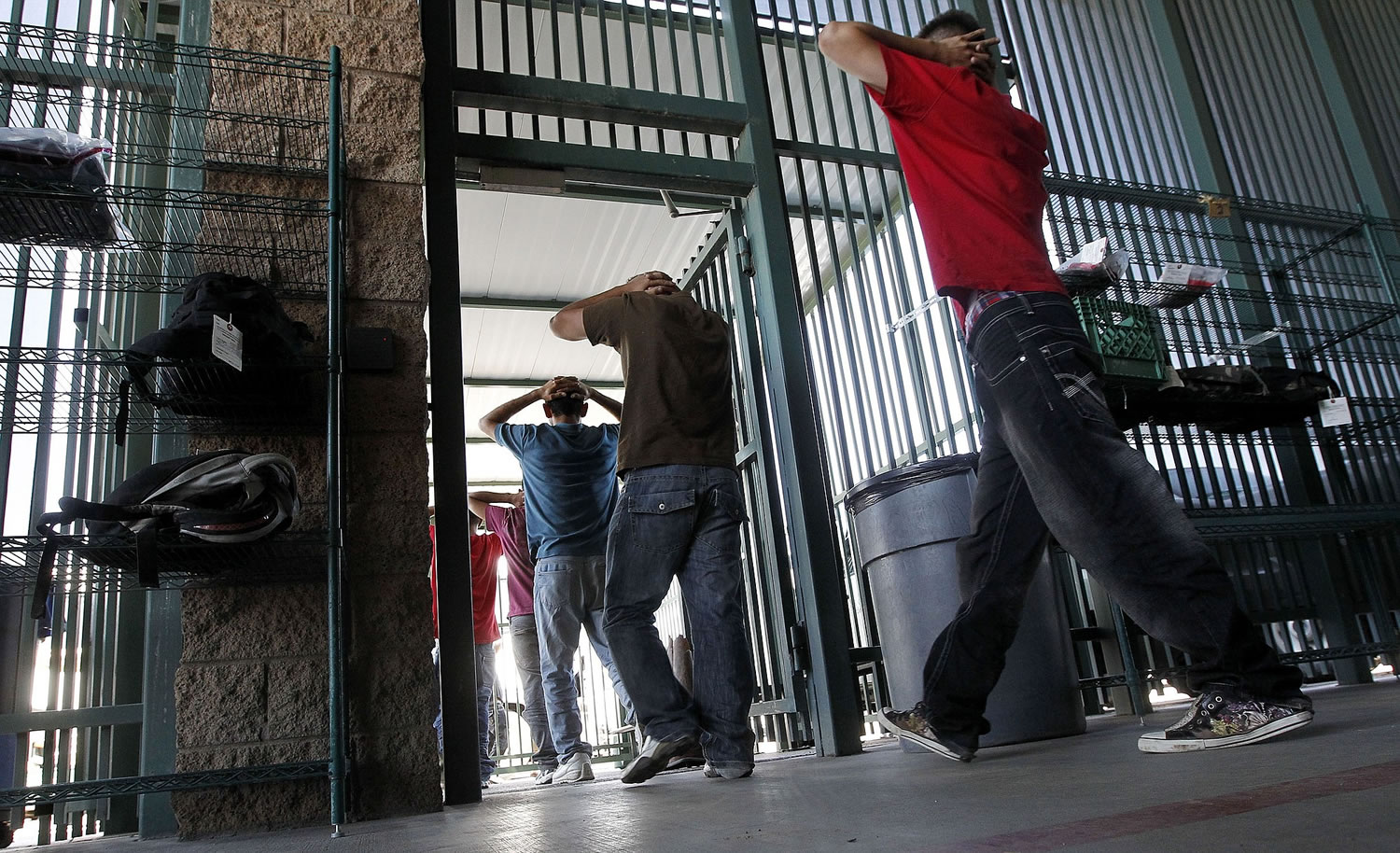MEXICALI, Mexico — A U.S. effort to discourage immigrants’ repeated attempts to enter the country illegally by dropping them back in Mexico hundreds of miles away from where they were caught has been sharply scaled back after producing relatively modest gains.
U.S. authorities insist the Alien Transfer Exit Program has contributed to overall achievements in border security and say the cutbacks reflected a need to shift resources to deal with Central Americans pouring into Texas.
The government has flown or bused hundreds of thousands of Mexican men to faraway border cities since February 2008, believing they would give up after being separated from their smugglers.
But government statistics and interviews with migrants in Mexican shelters suggest the dislocation is a relatively ineffective deterrent, especially for immigrants with spouses, children and roots in the U.S.
After being dropped off, many get on another bus and head right back to where they started.
Once there, they reunite with their smugglers for another attempt, taking advantage of a standard practice that they pay only when they cross successfully.
“It’s a nuisance. That’s all,” said Pablo Hernandez, 50, who lingered in the hallway of a shelter in Mexicali, swapping stories with other migrants after the U.S. government took him on a five-hour bus ride from Tucson, Arizona.
He planned to take a commercial bus to the Mexican town of Altar to reunite with his smuggler, who provided a phone number and said he wouldn’t demand his $3,400 fee until Hernandez made it.
The challenges illustrate the limits and pitfalls of massive spending increases on border enforcement.
Despite overwhelming numbers of Central Americans crossing in Texas, the Border Patrol is making strides by key measures, including a drop in the percentage of migrants who are arrested entering the country again after being caught.
The recidivism rate for all migrants arrested on the Mexican border fell to 16 percent in the 2013 fiscal year from 17 percent a year earlier, 20 percent in 2011, 24 percent in 2010 and 27 percent in 2009.
But results for ATEP, as the program is known, were higher: 25 percent last year, up from 24 percent the previous year, down from 28 percent the year before, 33 percent in 2010 and 34 percent in 2009.
Last year’s 9-point difference between ATEP and the overall rate matched the widest ever.
ATEP has barely fared better than “voluntary returns,” the term for migrants who are simply turned around without being charged. Criminal prosecutions have yielded the lowest recidivism rates.
Without fanfare, the U.S. Immigration and Customs Enforcement agency largely withdrew from ATEP last June after spending $15.2 million to fly 50,295 Mexican men on 421 flights from Harlingen, Texas, to California’s Imperial Valley, which neighbors Mexicali.
ICE virtually stopped providing detention space for ATEP and pulled back on bus transportation.
Thomas Homan, ICE’s executive associate director for enforcement and removal operations, told a congressional panel in March that ATEP was “a good border enforcement strategy” but that ICE shifted money to flying home Central Americans who cross in South Texas, the busiest corridor for illegal crossings.
On Tuesday, President Barack Obama asked Congress for $3.7 billion in emergency spending to deal with that crisis.
U.S. Customs and Border Protection, which oversees the Border Patrol, said in a statement that ATEP has disrupted smuggling networks and contributed to an overall decline in recidivism rates.
The program, it said, “was designed specifically to create displacement and increase time between entry attempts.”
Asked to provide the cost, Customs and Border Protection said ATEP “uses resources that were already in place … and cannot be separated from the normal cost of doing business.”
Until last year, ICE typically paid a night of detention, which cost an average of $119 a person.



